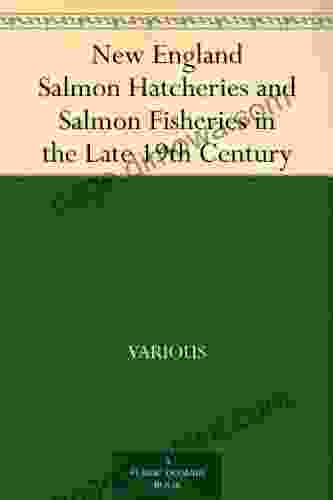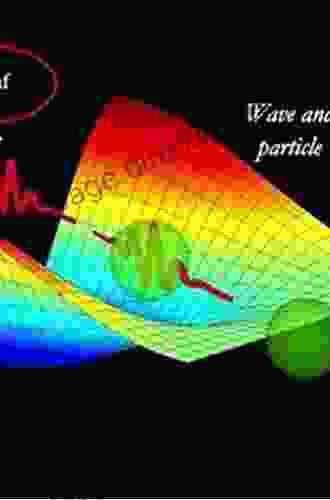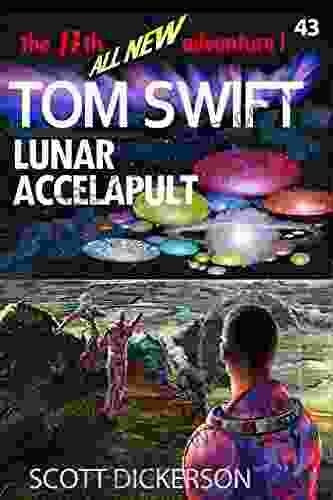Quantum Field Theory: A Diagrammatic Approach to the Standard Model

Quantum field theory (QFT) is a theoretical framework that describes the behavior of subatomic particles and forces. It is the foundation of modern particle physics, and it has been used to explain a wide range of phenomena, from the structure of atoms to the behavior of black holes.
In this book, we will learn how to use QFT to describe the interactions of the fundamental particles that make up the Standard Model of particle physics. We will start by introducing the basic concepts of QFT, such as fields, particles, and interactions. Then, we will develop the diagrammatic approach to QFT, which is a powerful tool for calculating the probabilities of different physical processes.
5 out of 5
| Language | : | English |
| File size | : | 38264 KB |
| Text-to-Speech | : | Enabled |
| Screen Reader | : | Supported |
| Enhanced typesetting | : | Enabled |
| Word Wise | : | Enabled |
| Print length | : | 550 pages |
Finally, we will use the diagrammatic approach to study the interactions of the fundamental particles in the Standard Model. We will learn how to calculate the scattering cross sections for these interactions, and we will use these cross sections to understand the behavior of particles in particle accelerators.
What is QFT?
QFT is a theoretical framework that describes the behavior of subatomic particles and forces. It is based on the idea that all particles are excitations of quantum fields. A quantum field is a mathematical object that describes the state of a particle at every point in space and time.
The particles that we observe in nature are excitations of these fields. For example, an electron is an excitation of the electron field, and a photon is an excitation of the photon field.
The interactions between particles are described by interactions between the corresponding quantum fields. For example, the electromagnetic force is described by the interaction between the electron field and the photon field.
The Diagrammatic Approach to QFT
The diagrammatic approach to QFT is a powerful tool for calculating the probabilities of different physical processes. It is based on the idea that the interactions between particles can be represented by diagrams.
In a Feynman diagram, the particles are represented by lines, and the interactions are represented by vertices. The diagrams can be used to calculate the probability of a particular process occurring.
For example, the diagram below shows the Feynman diagram for the scattering of two electrons by a photon.
[Image of a Feynman diagram for the scattering of two electrons by a photon]
The diagram shows that the two electrons interact with each other by exchanging a photon. The probability of this process occurring can be calculated using the diagram.
The Standard Model of Particle Physics
The Standard Model of particle physics is a theory that describes the interactions of the fundamental particles that make up matter. It is the most successful theory in physics, and it has been used to explain a wide range of phenomena, from the structure of atoms to the behavior of black holes.
The Standard Model includes three generations of particles. The first generation includes the up and down quarks, the electron, and the electron neutrino. The second generation includes the charm and strange quarks, the muon, and the muon neutrino. The third generation includes the top and bottom quarks, the tau, and the tau neutrino.
The particles in the Standard Model interact with each other through four fundamental forces: the electromagnetic force, the weak force, the strong force, and the gravitational force. The electromagnetic force is responsible for the interactions between charged particles, the weak force is responsible for the interactions between particles that have a weak charge, the strong force is responsible for the interactions between particles that have a strong charge, and the gravitational force is responsible for the interactions between all particles.
QFT is a powerful theoretical framework that has been used to explain a wide range of phenomena in particle physics. The diagrammatic approach to QFT is a powerful tool for calculating the probabilities of different physical processes. The Standard Model of particle physics is a theory that describes the interactions of the fundamental particles that make up matter. It is the most successful theory in physics, and it has been used to explain a wide range of phenomena, from the structure of atoms to the behavior of black holes.
5 out of 5
| Language | : | English |
| File size | : | 38264 KB |
| Text-to-Speech | : | Enabled |
| Screen Reader | : | Supported |
| Enhanced typesetting | : | Enabled |
| Word Wise | : | Enabled |
| Print length | : | 550 pages |
Do you want to contribute by writing guest posts on this blog?
Please contact us and send us a resume of previous articles that you have written.
 Book
Book Novel
Novel Page
Page Chapter
Chapter Text
Text Story
Story Genre
Genre Reader
Reader Library
Library Paperback
Paperback E-book
E-book Magazine
Magazine Newspaper
Newspaper Paragraph
Paragraph Sentence
Sentence Bookmark
Bookmark Shelf
Shelf Glossary
Glossary Bibliography
Bibliography Foreword
Foreword Preface
Preface Synopsis
Synopsis Annotation
Annotation Footnote
Footnote Manuscript
Manuscript Scroll
Scroll Codex
Codex Tome
Tome Bestseller
Bestseller Classics
Classics Library card
Library card Narrative
Narrative Biography
Biography Autobiography
Autobiography Memoir
Memoir Reference
Reference Encyclopedia
Encyclopedia Rand R Wilcox
Rand R Wilcox Peter R Henriques
Peter R Henriques Raphael Rosen
Raphael Rosen Steve Purcell
Steve Purcell Norbert Dragon
Norbert Dragon Svetlana Karslioglu
Svetlana Karslioglu Paul Sabiston
Paul Sabiston Susan Wiggs
Susan Wiggs L T Cole
L T Cole Mike Malaghan
Mike Malaghan T Ewan Faulkner
T Ewan Faulkner Stephanie Marks Sawyer
Stephanie Marks Sawyer Peter J Ramberg
Peter J Ramberg Brendon Faife
Brendon Faife Ron Hulman
Ron Hulman Rahulkumar Shivajirao Hingole
Rahulkumar Shivajirao Hingole Paul Bouchard
Paul Bouchard Shan Gao
Shan Gao Phil Barton
Phil Barton Peter Hilliges
Peter Hilliges
Light bulbAdvertise smarter! Our strategic ad space ensures maximum exposure. Reserve your spot today!

 Braeden Hayes00 11 15 Int Saturday November 26 2005 07 15 56 Pm By Troy Anthony Platt: An...
Braeden Hayes00 11 15 Int Saturday November 26 2005 07 15 56 Pm By Troy Anthony Platt: An...
 Edward ReedUnleash Your Inner Musician: Pad Song Medley for Teens, the Ultimate Guide to...
Edward ReedUnleash Your Inner Musician: Pad Song Medley for Teens, the Ultimate Guide to... Gerald BellFollow ·3k
Gerald BellFollow ·3k Darren NelsonFollow ·7.4k
Darren NelsonFollow ·7.4k Josh CarterFollow ·6.5k
Josh CarterFollow ·6.5k Guy PowellFollow ·2.3k
Guy PowellFollow ·2.3k Haruki MurakamiFollow ·10k
Haruki MurakamiFollow ·10k Dalton FosterFollow ·11.1k
Dalton FosterFollow ·11.1k Francis TurnerFollow ·2.4k
Francis TurnerFollow ·2.4k Tennessee WilliamsFollow ·13.3k
Tennessee WilliamsFollow ·13.3k

 Norman Butler
Norman ButlerUnveiling the Legacy of New England Salmon Hatcheries and...
Journey back in time to...

 J.R.R. Tolkien
J.R.R. TolkienEmbark on a Literary Adventure with Oliver Twist: A...
Unveiling the Complex World of Oliver...

 Todd Turner
Todd TurnerEnter the Mesmerizing Realm of Snooker: A Journey of...
Get ready to embark on an...

 Richard Wright
Richard WrightElements of Plasma Technology: A Journey into the...
Prologue:...

 George Bell
George BellBarbarian: Forgotten Legends of the Germanic Peoples - A...
Step into a world of...

 Drew Bell
Drew BellMaster GCSE English with the Ultimate Guide: Letts GCSE...
Prepare with Confidence for Success in GCSE...
5 out of 5
| Language | : | English |
| File size | : | 38264 KB |
| Text-to-Speech | : | Enabled |
| Screen Reader | : | Supported |
| Enhanced typesetting | : | Enabled |
| Word Wise | : | Enabled |
| Print length | : | 550 pages |








